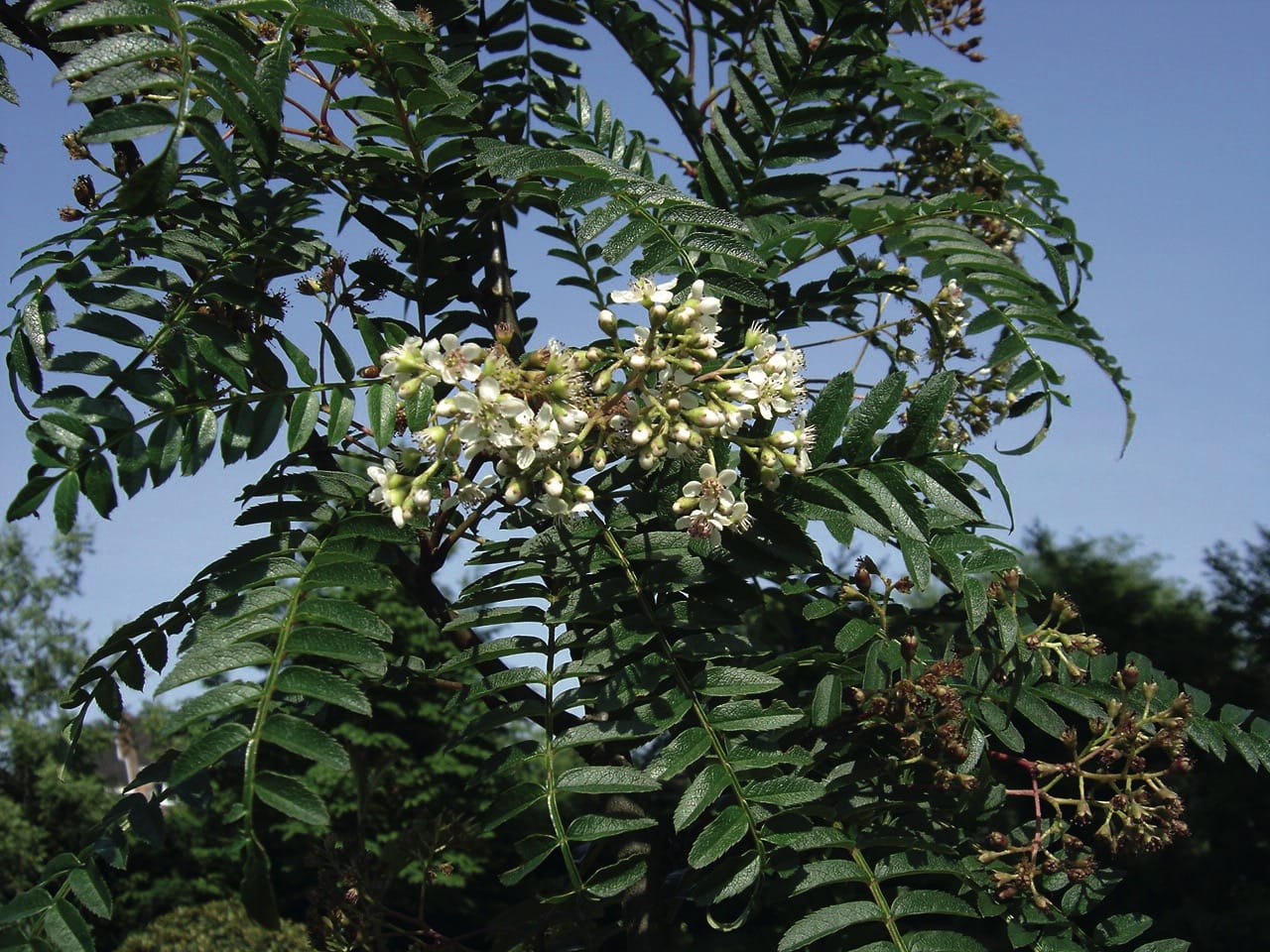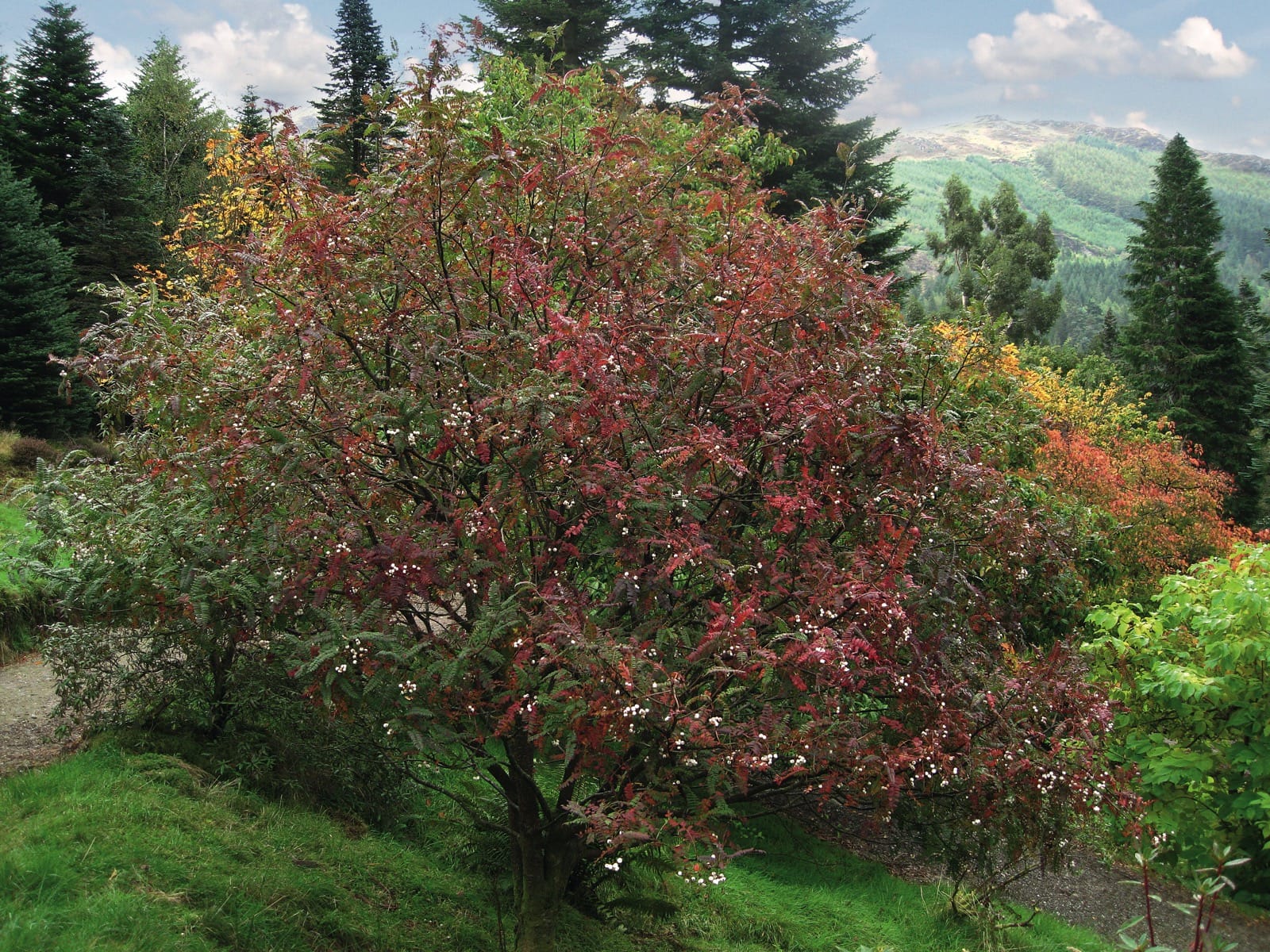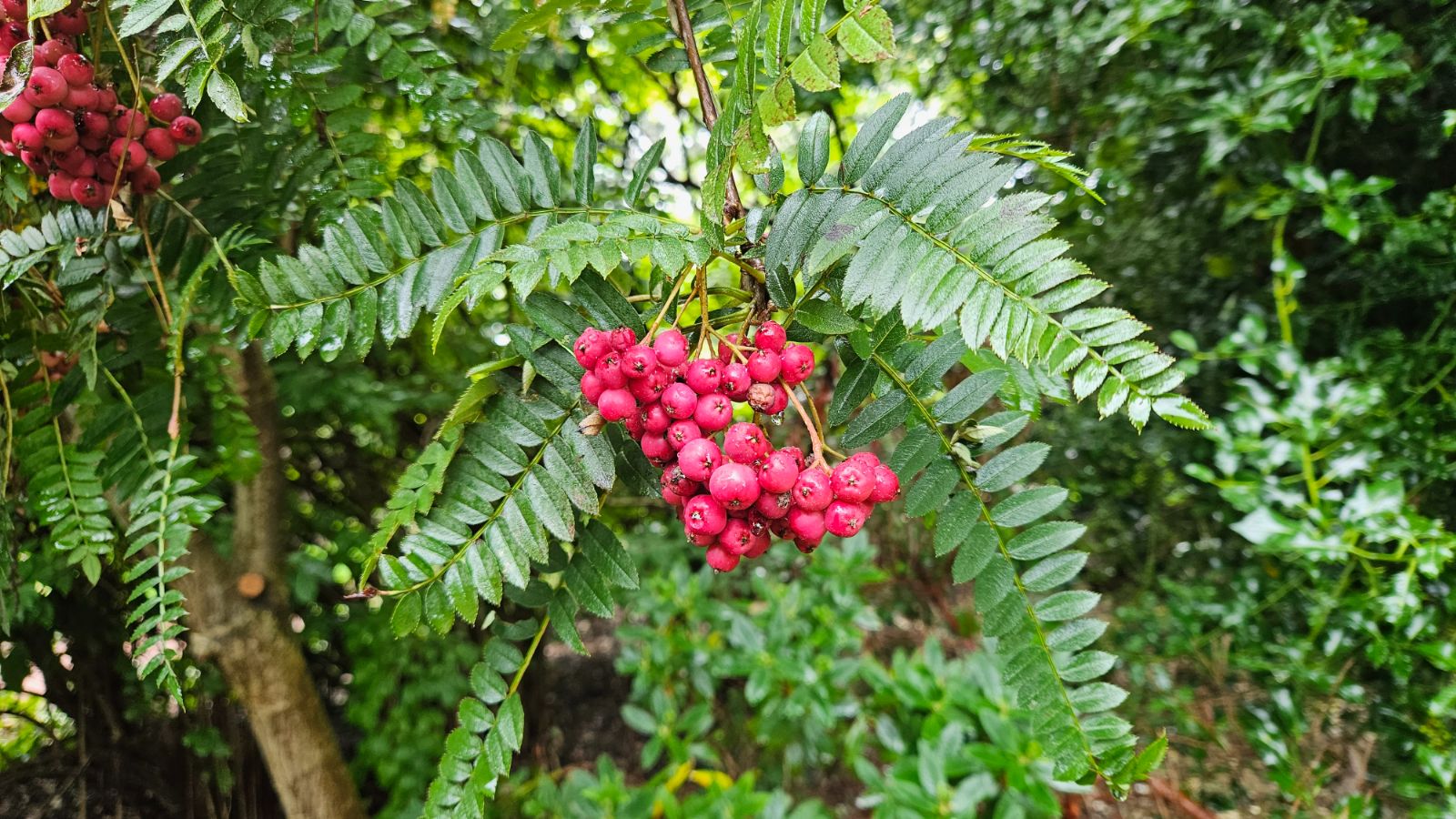Sorbus microphylla
Sponsor
Kindly sponsored by
This genus has been sponsored and new text is being prepared.
Credits
Article from Bean's Trees and Shrubs Hardy in the British Isles
Article from New Trees by John Grimshaw & Ross Bayton
Recommended citation
'Sorbus microphylla' from the website Trees and Shrubs Online (treesandshrubsonline.
Genus
Synonyms
- S. rufopilosa Schneid.
Other taxa in genus
- Sorbus americana
- Sorbus amoena
- Sorbus arachnoidea
- Sorbus aucuparia
- Sorbus carmesina
- Sorbus cashmiriana
- Sorbus commixta
- Sorbus coxii
- Sorbus decora
- Sorbus discolor
- Sorbus ellipsoidalis
- Sorbus esserteauiana
- Sorbus fansipanensis
- Sorbus foliolosa
- Sorbus forrestii
- Sorbus glabriuscula
- Sorbus glomerulata
- Sorbus gracilis
- Sorbus helenae
- Sorbus hupehensis
- Sorbus hypoglauca
- Sorbus insignis
- Sorbus 'Joseph Rock'
- Sorbus khumbuensis
- Sorbus koehneana
- Sorbus kongboensis
- Sorbus kurzii
- Sorbus lingshiensis
- Sorbus matsumurana
- Sorbus muliensis
- Sorbus olivacea
- Sorbus parvifructa
- Sorbus pohuashanensis
- Sorbus poteriifolia
- Sorbus prattii
- Sorbus pseudohupehensis
- Sorbus pseudovilmorinii
- Sorbus randaiensis
- Sorbus reducta
- Sorbus rinzenii
- Sorbus rubescens
- Sorbus rufopilosa
- Sorbus rushforthii
- Sorbus sambucifolia
- Sorbus sargentiana
- Sorbus scalaris
- Sorbus sitchensis
- Sorbus tianschanica
- Sorbus ursina
- Sorbus vilmorinii
- Sorbus wallichii
- Sorbus wilsoniana
A tree usually under 20 ft in the wild, or a shrub; branchlets glabrous by autumn, purplish brown; winter-buds ovoid, about 1⁄4 in. long, glabrous except for a tuft of brown hairs at the tip. Leaves with mostly ten to fifteen pairs of leaflets; rachis narrowly grooved, winged in the apical part, clad beneath with pale brown or whitish hairs, or the two intermixed. Leaflets oblong, up to 5⁄8 in. long and about half as wide, acute, deeply and sharply toothed throughout, glabrous or often somewhat hairy above, more densely so beneath, especially on the midrib. Flowers pink or even red, few in a narrow, lax cluster; inflorescence-branches brownish red, clad with brown or whitish hairs, which are rather denser on the pedicels, which, like the main branches of the inflorescence, are conspicuously lenticellate. Fruits white or pinkish, globular, 3⁄8 in. or slightly more wide.
Native of the rainier parts of the Sino-Himalayan region from Nepal to Yunnan; described by Wenzig mainly or wholly from specimens collected by Hooker and Thomson in the interior of Sikkim in 1849. Ludlow and Sherriff collected seeds of this species on at least one occasion, but the few plants in cultivation under the name S. microphylla were raised from seeds collected in Nepal in the late 1960s and early 1970s; these have not yet been seen in flower. This species gives good autumn colour in the wild.
In the western Himalaya (Kashmir, Simla region and perhaps Nepal) there is a small-leafleted species of Sorbus which may be specifically distinct from S. microphylla. It is more glabrous in all its parts; the leaflets are fewer; and the pedicels are not lenticellate. The colour of the flowers is not stated on the specimens seen. It is represented in the Wallich Herbarium by a specimen collected by Webb southeast of Simla early in the last century, to which the name Pyrus microphylla is attached in the catalogue (No. 676). This name is of no validity unless published with a description. It has been assumed that the name S. microphylla Wenzig is based on it, but he did not cite it and may not even have seen a specimen of No. 676; certainly his description is not made from the Webb specimen, but agrees with the Hooker specimens from Sikkim, two of which he did cite. These are S. rufopilosa Schneid., which therefore becomes a synonym of S. microphylla Wenzig.
From the Supplement (Vol. V)
The statement at the beginning of the second paragraph (page 446) that Wenzig described the species mainly or wholly from specimens collected in Sikkim refers to S. microphylla after emendation by Hedlund. Wenzig’s description of the fruits was drawn from Falconer 390, collected in Kashmir. Hedlund’s emendation consisted in removing this specimen from the circumscription of S. microphylla and making it the type of his own S. cashmiriana, which therefore has S. microphylla Wenzig, in part, as a synonym.
A Sorbus provisionally identified as S. microphylla is figured in Bot. Mag., n.s., t.879 (1983). It was raised at Kew from seeds collected by Brian Halliwell under his no. 121 in 1970, from a tree about 25 ft high, growing on the bank of the Langtang river of central Nepal. The leaves have up to thirty-three leaflets (sixteen pairs), about 1 in. long, rusty-hairy beneath at first. Flowers about 3⁄8 in. wide, with pink petals. Fruits flattened-globose, about 1⁄2 in. wide, white with a pink flush. The Kew tree is tetraploid and had reached a height of about 8 ft when ten years planted. It is very ornamental and received an Award of Merit in 1981 when exhibited from Kew in fruit.
In many respects the Kew tree recalls S. cashmiriana, though obviously differing in the smaller, more numerous leaflets and the smaller flowers and fruits.
From New Trees
Sorbus microphylla agg.
Shrub or tree to 10 m. Branchlets reddish brown or greyish brown. Buds to 0.8 cm, ovoid to conical, reddish with reddish brown hairs, particularly at scale apices. Leaves to 16 cm long, with 12–14 pairs of leaflets. Leaflets to 2.5 × 0.8 cm, rather variable, but may be pubescent with dentate margins. Inflorescences lax. Flowers small, pink to crimson. Fruit white with some pink, 0.8–1.1 × 0.95–1.2 cm; sepals not fleshy, midrib visible, carpels three to five. Tetraploid apomict (2n = 68). Lu & Spongberg 2003, McAllister 2005a. Distribution BHUTAN; CHINA: northwest Yunnan; INDIA: Sikkim; MYANMAR; NEPAL. Habitat Mountain thickets, between 3000 and 4000 m asl. USDA Hardiness Zone 6. Conservation status Not evaluated. Illustration McAllister 2005a; NT796, NT807. Cross-references B446, S499.
In describing Sorbus microphylla, Wenzig included material that is now treated as belonging to S. cashmiriana (the type) and S. rufopilosa. Rushforth (1993) lectotypified S. microphylla Wenzig emend Rushforth, making the Thomson specimen from Simla, India (preserved at Berlin) the lectotype. However, this is not in cultivation, and the complex is known to contain many pink-to crimson-flowered Himalayan apomictic microspecies, in which S. rufopilosa is an important diploid parent. Were the pattern of recognising each clonal population as a microspecies to be strictly followed, each of the many entities that fit here could bear a separate name. Such a plethora of species would be unworkable for field botanists and horticulturists alike (apomicts in the living state often being identifiable only in fruit) and McAllister’s approach of treating this group under an aggregate name is wise. Another reason he gives for not naming all these plants is that they tend not to thrive in cultivation, obviating the desirability of attaching an epithet to each and every one. The exception is the easy-to-grow S. khumbuensis (see p. 805), which unlike other members of the group has fruits that turn crimson before becoming pinkish white. The rest of the S. microphylla aggregate have white fruits with varying amounts of pink, but share pink to red flowers. Material has been brought into cultivation on multiple occasions, the first apparently being the collection made by Schilling, Sayers and Bista (SSB 443) in the Langtang valley of Nepal in 1966, followed by a further series of introductions from Nepal during the 1970s, through to Ron McBeath’s gatherings in the Barun Khola in 1981. These collections are maintained in cultivation but seem to thrive only in the cooler wetter parts of the United Kingdom: for example, at Inverewe on the west coast of northern Scotland (McAllister 2005a). A more recent introduction, currently commercially available, was made at 3700 m in northern Sikkim in 2002, by Sally Goddard and Sue and Bleddyn Wynn-Jones (GWJ 9252), who describe it as ‘wonderfully neat’ (Crûg Farm Plants 2007–2008).



